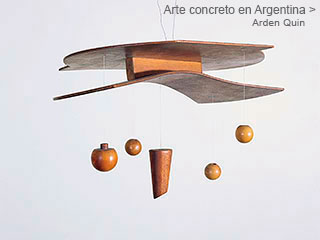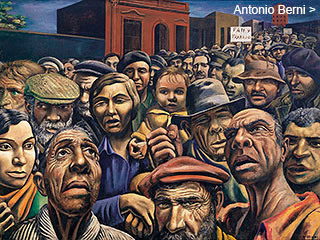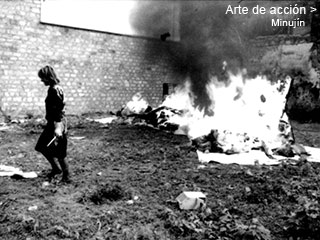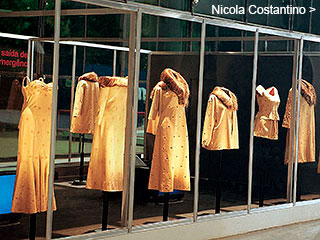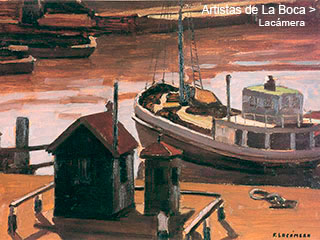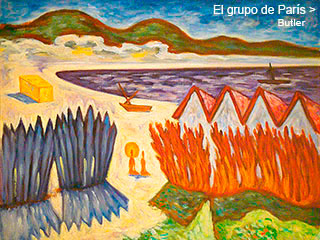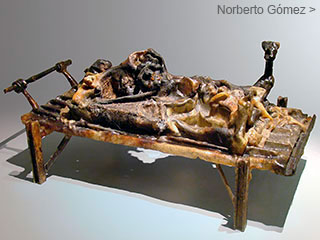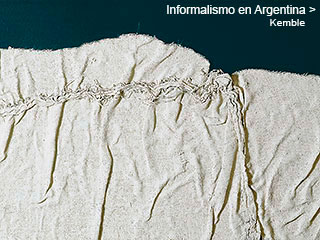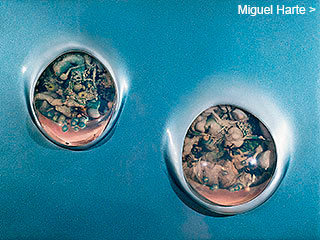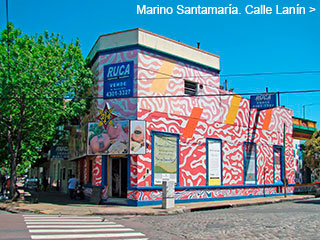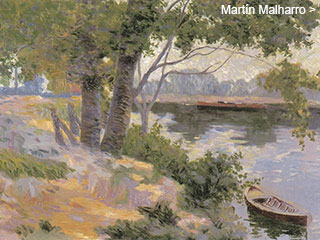Menú
Algunos dossiers
La Boca
Artists
Artists
by
Florencia Battiti and Cintia Mezza
August 2006
August 2006
We are about to venture into the fascinating world of the famed La Boca artists. This dossier reviews the gravitations of the modernization process of Argentine art throughout the last one hundred years, and the role that its growing cultural institutions played along the way. This investigative work has been authored by Florencia Battiti, and assisted by Cintia Mezza.
1901
Sociedad Fotográfica Argentina de Aficionados. Muelles del Riachuelo. Mercado de Frutas (detail), c. 1900
The echoes of the blue collar workers concerns in the city of Chicago (1886) regarding the shortening of the work day are heard in our country. The “calafateros” (caulkers) one of the first groupings of workers of the port area, make a bell to announce the arrival and departure of the work shift at the Grondona shipyard. On October 16, the labor union announces that its workers will only work eight hours a day using the bell to sound off their newly shortened work shift. Upon the intervention of the Prefectura (Port Police) and in the middle of a threat of violence, the workers decide to throw the bell into the river. Finally, the ship yard management accepts the labor claim and the bell is recovered after a few days of searching the river, sounding off the new shortened work day.
Towards the end of the 1940’s, with the changes that technology brings about, the trade of caulking vanishes and the labor union decides to donate the bell to the Museo Municipal de Bellas Artes Quinquela Martín, an act which is presided by its president, Juan de Dios Filiberto. On March 19, 1994, the
more


